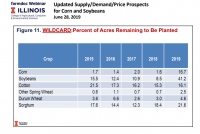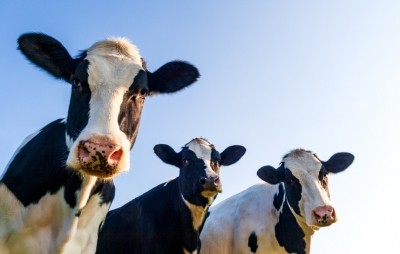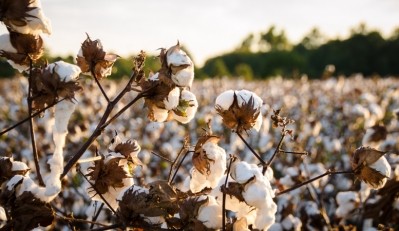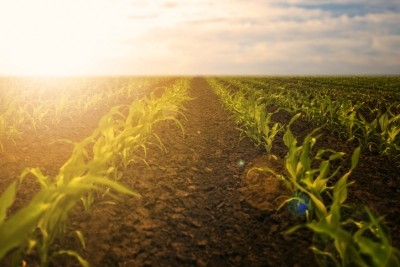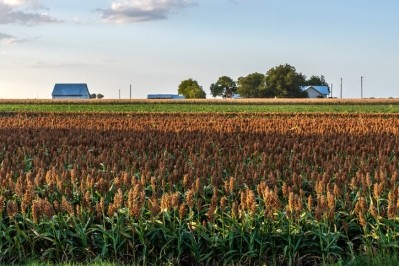US planted feed crop acres raise questions, tank corn price
The US Department of Agriculture (USDA) released details about the US grain stocks and planted acres in a series of reports on Friday [June 28].
The total area reported planted in corn in 2019 is 91.7m acres, an increase of 3% from 2018, the USDA reported. Planted acres stayed the same or increased in 40 of the 48 states surveyed.
Soybean planting dropped 10% to an estimated 80m acres, it said. The amount marks the smallest soybean crop for the US since 2013.
Shortly after the acreage report was published, US corn prices dropped, with Chicago Board of Trade (CBOT) wheat for July dropping from 547.50c/bu to 528.00c/bu.
However, the National Agricultural Statistics Service (NASS) reported that it was planning to gather updated information from 14 states on the acres planted with feed crops including corn, soybeans and sorghum, along with cotton.
“The USDA and NASS announced that they’re going to do a very large-scale re-interview or resurvey of practically the entire Corn Belt in July,” said Scott Irwin, Laurence J Norton Chair of agricultural marketing with the University of Illinois during a farmdoc webinar on both the grain stocks and acreage reports.
The plan to resurvey producers suggests there are questions over the reported amount of intended, but unplanted acres, to date, he said.
Excessive rainfall had prevented planting at the time of the survey, said the NASS, leaving some acres still to be planted for corn in Illinois, Indiana, Iowa, Kansas, Michigan, Minnesota, Missouri, Nebraska, New York, North Dakota, Ohio, South Dakota, and Wisconsin; cotton in Arkansas; sorghum in Kansas; and soybeans in Arkansas, Illinois, Indiana, Iowa, Kansas, Michigan, Minnesota, Missouri, Nebraska, New York, North Dakota, Ohio, South Dakota, and Wisconsin.
If the newly collected data justify any changes, NASS said it will publish updated acreage estimates in the Crop Production report on August 12.
Planted, unplanted and intended acres
Overall, the total principal crop acreage in the US in 2019 was about 309.3m acres, which is a drop of about 10m acres from last year, said Irwin.
However, with factors like the acres that will not be planted for insurance reasons, there is still some uncertainty.
The largest declines by state, for principal crop acreage were in South Dakota, which dropped 2.1m acres, and Texas, which was down about 1m acres, he said. States in the Great Plains reduced principle acreage as did states in the Corn Belt to a lesser degree.
One factor that could explain both the drop in total crop acreage and the uptick in acres planted in corn would be the “stampede” out of soybean production potentially following the end of trade talks between the US and China, said Irwin.
“We’re showing, on a year-over-year basis, soybean [planted acres] are down about 9.1m acres.
“We also saw some declines in wheat and sorghum, but if you want to know why principal crop acreage is down, look at soybeans.
"That all didn’t just disappear, clearly, some of that moved to corn and, on a year-over-year basis this report indicates that intended corn acreage showed an increase of 2.6m acres.”
The other factor to consider is that the information for the planted acreage survey is collected in the first half of June and there are always some acres that have not been planted, but that are intended to be planted in crops like corn or soybeans, he said. In 2018, the number of acres that remained to be planted in corn was about 1.6% of the intended acreage.
On average about 2% or less of the corn acres have not been planted when the survey is conducted, he said. This year about 16.7% or 15.5m acres of the 91.7m acres set to be planted in corn were not planted by mid-June.
“That’s an enormous potential swing factor in acreage,” Irwin said. Additionally, the 15.5m acres could include some prevented plant acres as that is not reported separately.
“Ninety-one point seven million acres is the absolute upper bound that you should consider for corn planted acreage this year, [and] the much more reasonable expectation is that true acreage is somewhere below 91.7m,” he said.
On average, with soybeans, about 10% of the crop is intended, but unplanted during the June survey period, he said. This year about 41.2% or 33m acres out of 80m were unplanted.
Grain stocks
Overall the total stocks of corn dropped 2% compared to the amount in storage at this point last year, reported the USDA. There are about 5.2bn bushels in storage, with slightly more than half stored on-farm.
However, disappearance was down slightly for the March to May 2019 period, compared to the same window in 2018, the department said.
The total corn stocks were less than what the market predicted, said Irwin. “So, for the first time in quite a while we had a bullish stocks report,” he added.
There is, however, some question about how much of the drop in total amount could be attributed to use of corn as feed or residual and how much might have been lost in flooding, he said.
“Third quarter feed and residual use of corn was very nice at 1.128bn bushels and that’s the highest third quarter use of corn going back to 2009,” he said. “The fact that that number is an applied number and it’s so much larger than we have been seeking makes you suspicious that there’s at least a significant loss of stocks that disappeared and they show up in feed and residual due to the flooding maybe 100m bushels or more based on this data.”
Soybean stocks reached 1.79bn bushels, an increase of 47% from June 2018, the USDA said. However, disappearance from March to May 2019 was up 5% from the same time last year.
Old crop wheat stocks dropped 2% from the amount available last year, the department said. However, Total grain sorghum in storage was about 115m bushels an increase of 75% from this time in 2018.
